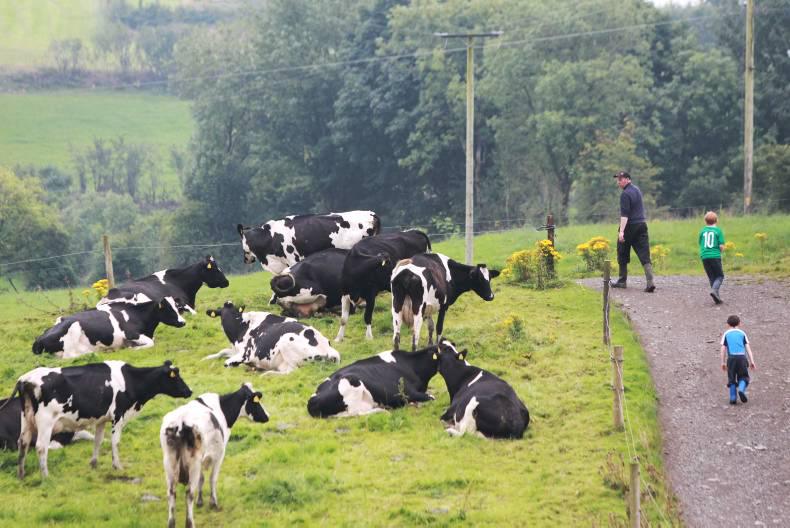Every Dairylink project farm situation is unique in terms of varying soil type, local climatic conditions, stocking rates and the management capabilities of the particular farmer.
The impact these factors have on both grass growth and the quantity of grass can be significant.
What we do know, however, is the range in soil fertility for grass growth across the project farms varies from 8% to 24% optimal in soil pH, P and soil K.
Data from the best commercial and research dairy farms indicate that this can be increased significantly. With grass clearly the cheapest feed available, increasing growth and utilisation will result in improved farm margin.
Research and analysis from Teagasc profit monitor and Pasturebase Ireland has illustrated that by increasing grass utilisation by 1t per hectare, net profit can be increased by €222/ha (£190/ha).
Project farmers are being encouraged to address the issues in an orderly fashion by getting drainage correct first, then moving on to soil fertility. Only after soil fertility is on track should they consider reseeding and grass varieties.
Recent research from Moorepark illustrated that lime applied at a rate of 5t/ha to soil with pH 5.3 increased grass production by 1.5 t DM/ha in the following two years. Research has also highlighted soils with P & K index 3 (index 2 based on NI soil analysis) will grow approximately 1.5 tDM/ha per year more grass than soils with index 1.
David Brady ticks all the boxes when it comes to improving grass production. A significant investment over the past two years has seen David improving drainage, soil fertility and getting top-quality grass varieties into production on the grazing block.
Coming from a base of 8% optimal in soil fertility, David did not want to invest in improving this figure until he addressed the drainage issue on the farm. Soil P is the most deficient nutrient in the soil with soil pH next in line, as can be seen from the graphs.
David Brady Stradone, Co Cavan
The soil type on the farm is heavy, with steep slopes on most of the grazing platform. I secured a long-term lease on some rented land, which is in the grazing block, this has allowed me to invest in this land and improve the production from these paddocks.
Ploughing money into rented land can be a difficult discussion, but this land was in poor condition, it needed drainage work and a complete reseed. The investment I have made into this land will be paid back in two years with the increase in production from the land.
Research has illustrated that swards with low proportions of perennial ryegrass cost farmers up to €293/ha (£250/ha) per year due to the loss of grass DM production and reduced nitrogen-utilising efficiency. If the cost of reseeding is estimated at €703/ha (£600/ha), the increased profitability of the reseed would cover the reseeding cost in just over two years. It is for this reason reseeding is one of the most cost-effective investments dairy farmers can make.
Getting the drainage work correct before reseeding the paddock is critical, the steep slopes on the farm can be a problem, so getting the water away with drainage ditches is important. We have our own track digger on the farm, which keeps the cost of this work down, and allows us to get the land improvement work done when conditions are ideal.
“Generally, we will plough after the drainage work and then work on preparing the seed bed before reseeding. This year I have used a three-variety mixture of Glenveagh, Glenroyal, and Aspect.
I look for a dense sward with good ground cover for the farm so use late heading diploid varieties in the reseed at a rate of 14kg/acre. If conditions allow, I will get cows onto reseeds at pre-grazing yields of 600kg, this allows light into the base of the plant to encourage tillering.






 This is a subscriber-only article
This is a subscriber-only article











SHARING OPTIONS: